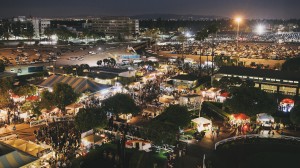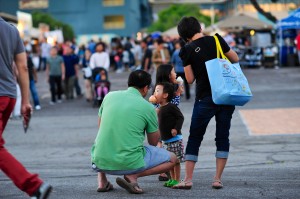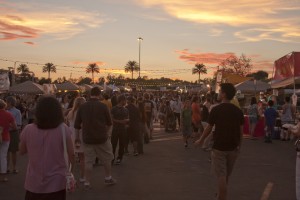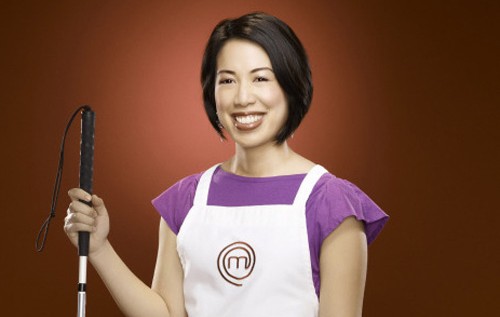A Night Market for the Community By Jasmine Ako and Photos Provided by Jonny Hwang

Inspired by Taiwan’s Night Markets, Southern California’s 626 Night Market has taken on a Life of its Own
The sizzle of meat skewers on a grill, the pungent smell of fermented “stinky” tofu, the rhythmic strumming of a musician’s guitar — these are just a few of the sights and sounds that visitors are immersed in at the 626 Night Market, named in reference to the 626 area code in Southern California where it is held.
Initially inspired by Taiwan’s famous street markets, the 626 Night Market has garnered enormous success, attracting an average of 50,000 visitors and 200 different vendors, artists and performers per event in 2013.
Capturing the Night Market Experience
626 Night Market founder, Jonny Hwang, was born in Taiwan, moved to the United States as a young child and spent the majority of his years in Southern California. However, he visited Taiwan regularly in the summers and also lived there for several years after college to open a bar and a restaurant. After moving back to Southern California to work in corporate entertainment, his experiences in Taiwan stayed with him.
“The culture there always stuck with me — the language, my memories as a child,” Hwang says. “But definitely, part of those memories was going to the night market.”
Beginning centuries ago as small, local markets selling traditional goods, Taiwan’s night markets are known for their tasty small eats (xiaochi in Mandarin), bustling crowds and vendors selling everything from food to consumer wares. The night market plays a central role in Taiwanese culture and is also popular in mainland China, South Korea and parts of Southeast Asia.
While food is its primary focus, the night market is also a gathering place. “It’s a place to socialize, catch up with old friends and meet up with family members,” says Hwang. “It’s a safe, convenient place that people have always enjoyed.”
Hwang began to wonder why the night market concept had not caught on in California, home to one-third of the U.S. Asian American population. In Alhambra, the city where he lived, over 50 percent of the population was Asian.
“How could there be so many Asian small businesses, and we all love night markets, but we don’t have that?” he reflects.
Early Obstacles
An entrepreneur at heart, Hwang threw around the idea of a night market for several years but knew he was up against a number of challenges. Among them were adhering to the health department’s requirements, working through logistical complexities, figuring out if restaurants wanted to participate and having to work with the city.
“There are farmer’s markets and things like that, but it’s a different beast to put a night market together,” says Hwang.
After receiving encouraging feedback from others and with some free time under his belt, Hwang knew he had to act. “I just thought, stop thinking and just do it,” he says.
With a PowerPoint deck in hand, Hwang pitched the idea to multiple cities in the 626 area code. He was turned down by almost every one of them except Pasadena, the site of the very first 626 Night Market. Both the city and Hwang vastly underestimated just how popular it would be.
“We planned to have 8,000 people max,” says Hwang. “The city said we’d be lucky if we got 500 or 1,000 people.”
Tens of thousands of visitors tried to get to the night market, clogging the streets with traffic and overcrowding the venue. Due to the event’s unprecedented pull, the night market received its fair share of disgruntled visitors and reviews. On the flip side, it also generated immense word of mouth and support. As with starting any business, Hwang took it as a valuable learning experience.
“It’s an interesting process, definitely a lot of evolution,” says Hwang. “First thing, we obviously assessed, ‘What’s the scale of our event? It seems like it has to be at least this big to accommodate demand.’ And from there, we just ramped up every aspect.”
Aileen Xu, the night market’s media relations manager and spokesperson, agrees.
“That season after the first event was about solving all of our problems and creating the best possible experience for our customers in order to redeem ourselves and bounce back from the negative reviews we collected from our first event,” she says. “We had to step up to the plate and prove ourselves, essentially.”
From trash cleanup to vendor efficiency to facilities and equipment, their team focused on a number of areas to increase operational capacity. But there was more to it than just creating a better-run night market.
“It was also figuring out what we wanted to do with the event,” says Hwang. Rather than having the night market just center around food and merchandise, there was potential to expand the concept.
“This is where our event started to take on its own life,” he says. “We’re not trying to be like a Taiwanese night market or night market in Asia anymore. We’re trying to develop our own identity, based on the spirits of those night markets.”
Engaging the Community
Musicians, artists and performers from the local community are invited to showcase their skills at the night market, lending a unique local flavor to the event.
“We don’t look for big headliners because they’re not from our community,” says Hwang. “It doesn’t make sense to hire a big band from somewhere else. It’s about creating a platform that enables anyone with talent to showcase what they have, whether it’s food, crafts, or artistic talent.”
The night market also supports a thriving community of small businesses and entrepreneurs, serving as a testing ground that vendors may not be able to get anywhere else.
“There’s the second and third generations who don’t want to work a nine-to-five like their parents told them,” says Hwang. “They want to start their own business or take a business that their parents started and take it to a different level.”
For entrepreneurs, the event is a relatively low-risk way to test products and concepts without committing to a lease on a storefront. Vendors can interact with their customers, get feedback, and implement changes fairly quickly. As a trustee with Kiva Zip, a peer-to-peer lending platform, the night market also provides additional support to its vendors. Hwang shares that many vendors have expanded or developed their businesses or franchises as a result from a successful night market showing, such as a Spam musubi vendor that plans on opening a pop-up shop in downtown Los Angeles this spring.
“They quit their day jobs to pursue this full-time, and it’s because of the night market that they’ve gained the confidence that this is an idea they can pursue,” says Hwang.
He also credits his own team, which comprises individuals from the very community the night market serves. “A lot of people came on as volunteers that just wanted to be a part of something that they believed in,” he says proudly. “I think because our team members are from the community, they believed in this event just like the people who showed up for it. Their energy and passion really shows.”
Xu references the “World’s Largest Cup of Boba Tea,” a giant cup of tea showcased at the event and built by vendors and team members, weighing in at more than 2,700 pounds, as representative of what their team has achieved.
“I see the giant boba cup as a symbol for the 626 community and a symbol that represents possibility — that if we work together and pull talents from our community, we can accomplish anything we dream up,” she says.
Beyond the 626
This summer, the night market is branching out of its 626 zip code with events in downtown Los Angeles and Orange County. While its focus will always be on food, the night market plans to introduce and promote a number of new and creative outlets, including an art walk, science and technology exhibits and a filmmaking contest.
Filmmaking is a particular passion of Hwang’s, who studied film in college at the University of Southern California and now edits small independent films. He hopes that the night market can be a platform for aspiring filmmakers and also elevate Asian representation in the mainstream media.
“We would love to find a great writer in our community to tell stories about our community,” he says. “Whether they create a short or feature film, that’s something we want to develop.”
With its new offerings and locations, the night market is becoming increasingly diverse and reflective of the communities it welcomes. “We want to be representative of all the people who come to our events,” says Hwang.
When asked what his favorite night market stall is, Hwang is split between traditional and new options, both symbols of what the night market has become. With its roots in the traditional night market, it’s now a community-driven event charting new culinary and creative paths.
“Every time we do eat the traditional foods: stinky tofu, fried oyster omelet. I always get those without a doubt,” he says. “But I also love trying the new things that our vendors come up with. It’s a mixture of both; I can’t just name one.”









